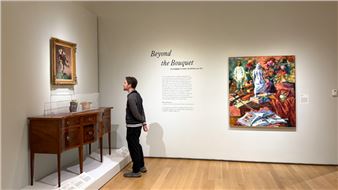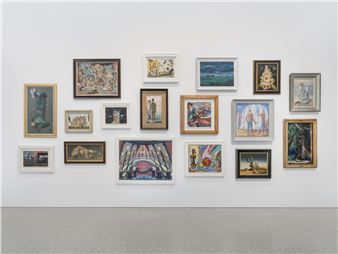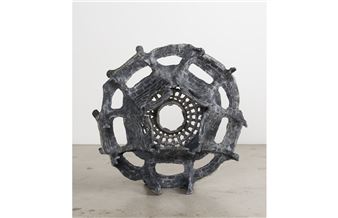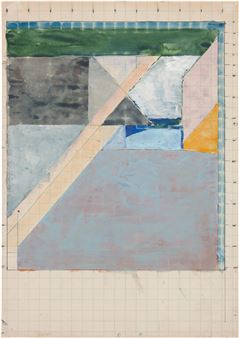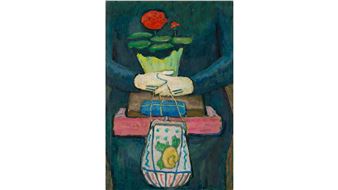Witnessing Humanity: The Art of John Wilson
For over six decades, the American artist John Wilson (1922ÔÇô2015) made powerful and poetic works that captured his life as a Black American artist and his ongoing quest for racial, social, and economic justice. Wilson's art reflected on and responded to the turbulent times in which he lived. His subjects included racial violence, labor, the writings of Richard Wright, the Civil Rights Movement, street scenes, and intimate images of family life, with a particular focus on fatherhood. Despite the power of his art and the continuing relevance of the themes he explored, WilsonÔÇÖs work has not received the recognition it deserves.
Working in a figurative style, Wilson sought to portray what he called ÔÇ£a universal humanity.ÔÇØ While still a teenager, he was struck by the absence of positive representations of Black Americans and their experiences in both museums and popular culture. To counter such prejudices and omissions, Wilson put the experiences of Black Americans at the center and created images that portrayed dignity and strength.
The exhibition features over 100 artworks made over the course of WilsonÔÇÖs career, many of which have not been shown before. The exhibition begins with work he made while in art school in Boston, where his subjects included the horrors of Nazi Germany and American racial violence, as well as portraits of his family and neighborhood. It continues through his time in Paris, Mexico City, and New York, capturing the humanity and scope of WilsonÔÇÖs art. The exhibition concludes with WilsonÔÇÖs return to Boston and his focus on portraiture. Included are maquettes and works on paper for two of WilsonÔÇÖs most celebrated worksÔÇöhis sculpture of Dr. Martin Luther King Jr. at the U.S. Capitol and the monumental sculpture Eternal Presence.
Witnessing Humanity will be the largest exhibition of Wilson's work and the artist's first solo museum show in New York. Visitors will see superb examples of WilsonÔÇÖs paintings, prints, drawings, and sculpture, as well as illustrations for childrenÔÇÖs books and archival material.
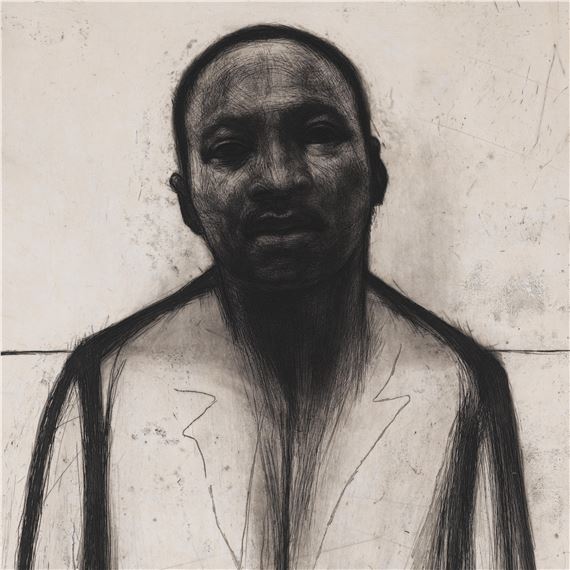
Recommended for you
For over six decades, the American artist John Wilson (1922ÔÇô2015) made powerful and poetic works that captured his life as a Black American artist and his ongoing quest for racial, social, and economic justice. Wilson's art reflected on and responded to the turbulent times in which he lived. His subjects included racial violence, labor, the writings of Richard Wright, the Civil Rights Movement, street scenes, and intimate images of family life, with a particular focus on fatherhood. Despite the power of his art and the continuing relevance of the themes he explored, WilsonÔÇÖs work has not received the recognition it deserves.
Working in a figurative style, Wilson sought to portray what he called ÔÇ£a universal humanity.ÔÇØ While still a teenager, he was struck by the absence of positive representations of Black Americans and their experiences in both museums and popular culture. To counter such prejudices and omissions, Wilson put the experiences of Black Americans at the center and created images that portrayed dignity and strength.
The exhibition features over 100 artworks made over the course of WilsonÔÇÖs career, many of which have not been shown before. The exhibition begins with work he made while in art school in Boston, where his subjects included the horrors of Nazi Germany and American racial violence, as well as portraits of his family and neighborhood. It continues through his time in Paris, Mexico City, and New York, capturing the humanity and scope of WilsonÔÇÖs art. The exhibition concludes with WilsonÔÇÖs return to Boston and his focus on portraiture. Included are maquettes and works on paper for two of WilsonÔÇÖs most celebrated worksÔÇöhis sculpture of Dr. Martin Luther King Jr. at the U.S. Capitol and the monumental sculpture Eternal Presence.
Witnessing Humanity will be the largest exhibition of Wilson's work and the artist's first solo museum show in New York. Visitors will see superb examples of WilsonÔÇÖs paintings, prints, drawings, and sculpture, as well as illustrations for childrenÔÇÖs books and archival material.
Artists on show
Contact details

Related articles
To be Black in America, artist John Woodrow Wilson (1922ÔÇô2015) once said, was to endure ÔÇ£a kind of slow death.ÔÇØ How best to fight that protracted, demoralizing violence? For Wilson, one solution was to produce art.
This fall, The Metropolitan Museum of Art will present Witnessing Humanity: The Art of John Wilson, the largest exhibition of this artistÔÇÖs work and his first solo museum show in New York.

 ARTISTS
ARTISTS








